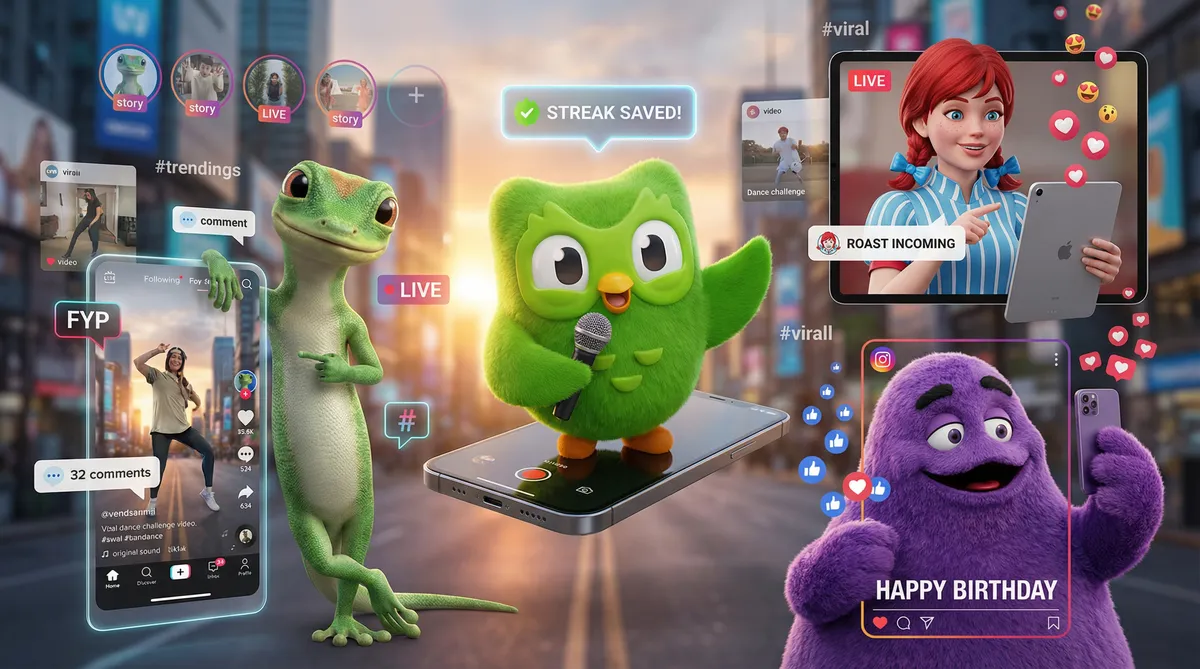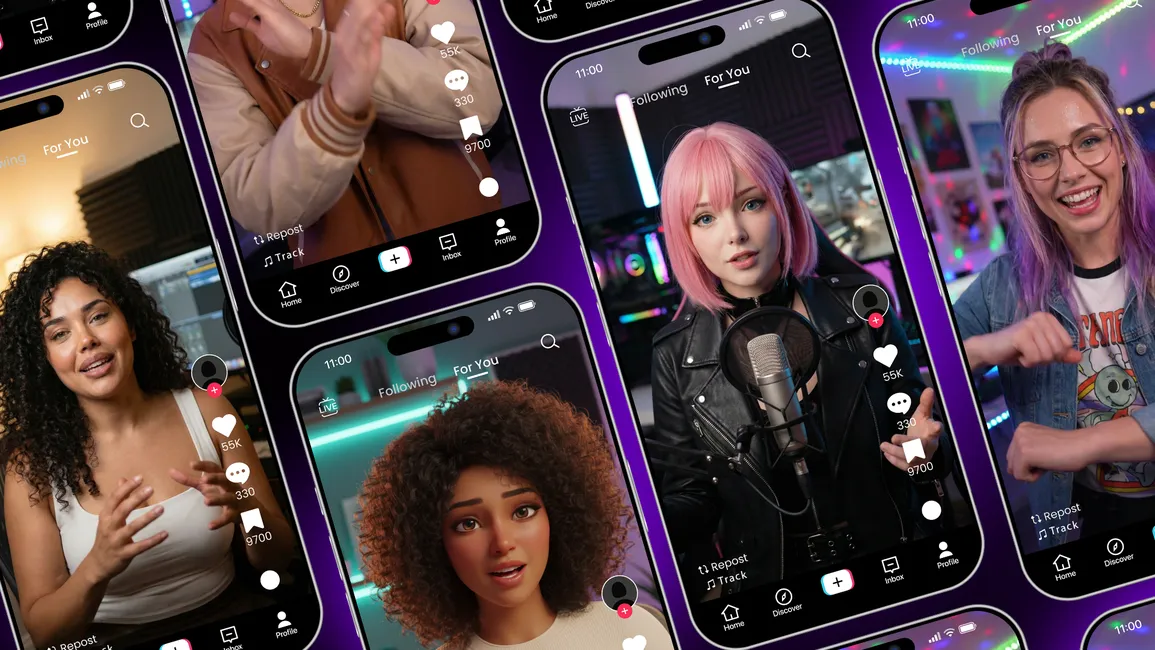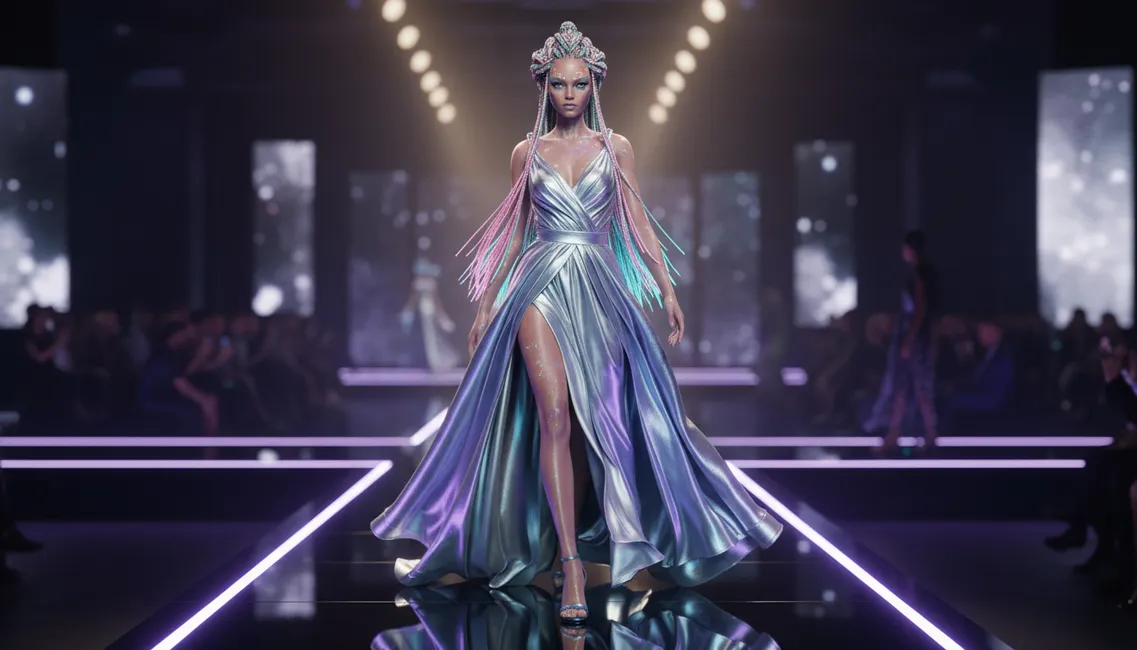
- What Are Virtual Brand Assistants?
- What Is the Backbone of a Virtual Assistant?
- Key Roles of Virtual Assistants in Brand Strategy
- How Virtual Assistants Differ from Traditional Brand Mascots and Influencers
- Real-World Examples of Cohesive Virtual Brand Characters
- Why Brands Are Investing in Virtual Assistants
- How to Create a Cohesive Virtual Brand Character
- Final Thoughts: Is Your Brand Ready for a Virtual Assistant?
You’ve probably been annoyed at least once by a chatbot on a website or app. You ask a question, and it keeps giving you the same reply—without really understanding what you mean. It’s frustrating! But here’s the good news: those old-style bots are a thing of the past. A new kind of virtual assistant is here. These smart helpers don’t just answer customer questions better—they can also take on many other tasks in your business. In this article, you’ll get to know what they can really do.
Today, leading companies are building next-gen brand ambassadors—AI-powered Virtual Assistants that not only look sharp but actually do the work. They are not just a chatbot; they respond to comments. Host product demos. Answer questions. Guide users through your online store. And they do it with a consistent tone, 24/7, across every platform.
Unlike traditional chatbots or cartoon mascots, these Virtual Assistants are unified brand characters. They’re part support agent, part content creator, part influencer—fully scalable, fully on-message, and increasingly, fully expected by modern audiences.
In Brazil, Lu do Magalu has become a retail celebrity. Not a real person, but a virtual character that connects with over 25 million people while helping Magazine Luiza attract buyers.
In this article, we’ll explore what virtual brand assistants are, how they’re evolving from novelty to necessity, and how your team can start leveraging them, whether you’re launching a new product or redefining your marketing strategy.
What Are Virtual Brand Assistants?
Let’s clear something up right now: Virtual Assistants aren’t just chatbots with prettier faces. They’re full-fledged brand characters—built with AI, powered by strategy, and developed to serve your brand wherever and whenever your audience shows up.
Today’s virtual assistants aren’t just tools—they’re characters. And the best part? They can show up wherever you need them. Maybe just in customer support. Maybe across your entire business. One character. Multiple roles. Total flexibility.
Here’s the thing: your customers don’t want to “deal with a system.” They want to connect. Just like they follow influencers on social media, trust their recommendations, and even buy what they suggest—your audience is ready to build that same kind of bond with your brand.
You just need the right face to meet them.
Let’s be honest: most businesses feel cold, stiff, or just plain hard to love. But put a lovable, emotionally expressive character between you and your customer? Everything changes. Look at Duolingo. Without that little green owl, it’s just another language app. With it? It’s unforgettable.
Now imagine your favorite online store.

Would you rather dig through menus for 30 minutes, or chat for 3 minutes with a smart, friendly AI assistant who feels like a helpful in-store guide?
That’s the future. And your customers already prefer it.
And that’s where the magic is. Because consistency builds trust. And trust builds conversion.
Need a real-world reference? Look at Lu do Magalu—Magazine Luiza’s iconic virtual brand character who’s been educating, entertaining, and converting millions across Brazil. That’s not science fiction. That’s marketing today.
Bottom line?
If your brand still thinks of Virtual Assistants as optional, it’s time to reconsider. They’re not just helpful. They’re strategic. Scalable. On-message. And always ready to work.
From Chatbots to Cohesive Characters
We’ve come a long way from the days of clunky website chat popups saying, “Hi! How can I help you today?”
Traditional chatbots were functional—but transactional. They answered FAQs, handled simple routing, and often left users frustrated when things got even slightly off-script.
Virtual Assistants are a different species entirely. Thanks to AI progress!
They’re not scripts in a bubble. They’re cohesive brand characters—digital personas with names, backstories, tone of voice, and design systems that make them feel alive across every touchpoint.
Put simply, they can be a brand mascot, a brand ambassador, and your CRM assistant all at the same time. You can choose what you want!
They don’t just respond—they relate. They don’t just support—they speak for your brand.
Instead of saying, “Here are some products you might like,” they say,
“Let me show you my top picks from this drop—I’ve been obsessed with this color palette lately.”
See the difference?
It’s not about replacing humans. It’s about giving your brand a voice that can scale like code but resonate like a person. A cohesive Virtual Assistant becomes an extension of your team—aligned with your tone, available 24/7, and never off-message.
And because they can show up everywhere—TikTok reels, in-app chats, smart mirrors in retail stores—they’re not just service tools. They’re brand touchpoints. They become familiar. Memorable. Trusted.
This is where brand loyalty starts: with a character that shows up the same way, every time, across platforms, cultures, and conversations.
This is storytelling. This is service. This is brand embodiment—done right.
What Is the Backbone of a Virtual Assistant?
Behind every successful Virtual Assistant lies a powerful mix of technology, design, and strategy. It’s not just about pretty CGI or witty copy—it’s about building a system that performs reliably, learns continuously, and speaks fluently in your brand’s voice.
Let’s break it down.
1. Artificial Intelligence (AI)
At the core is AI—particularly LLM and advanced AI models. This is what enables a Virtual Assistant to understand questions, generate human-like responses, and adapt to user behavior over time. It’s not memorizing scripts—it’s learning patterns, preferences, and nuance.
2. Character Design & CGI Modeling
This is where personality meets visual presence. Your Virtual Assistant isn’t just a tool—it’s a character. A lifelike CGI or stylized 3D design gives it a face. Add a voice, mannerisms, and consistent behavior across platforms, and now you’ve got someone your audience recognizes and relates to.
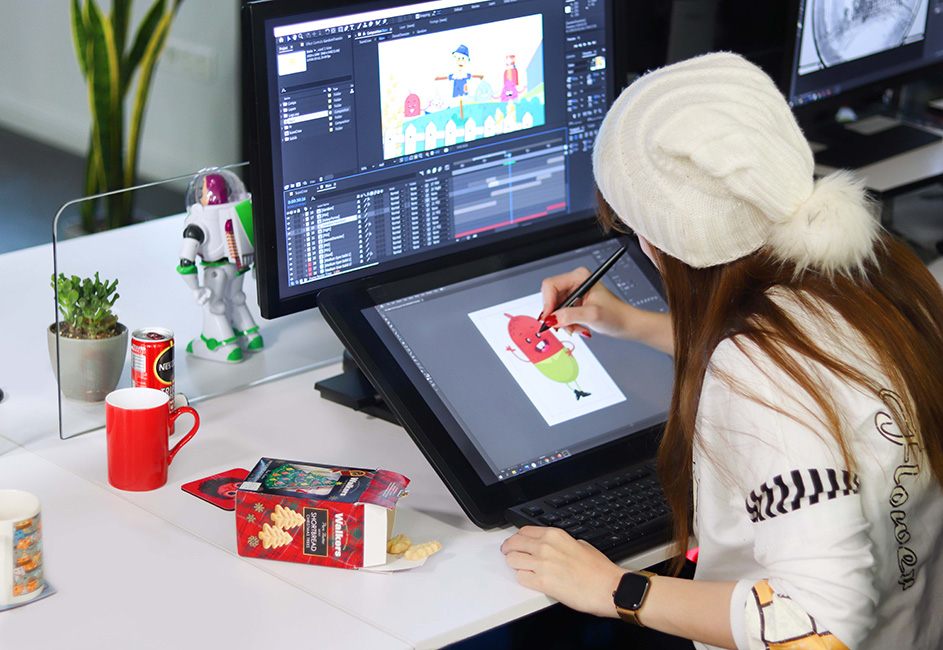
3. Storytelling & Brand Strategy
Your assistant needs a backstory. Why? Because that’s what transforms a digital tool into a believable brand companion. Its style of speaking, sense of humor, values—it all must align with your brand identity. Without a narrative, it’s just another animated asset.
4. Real-Time Content Engine
Virtual Assistants that shine on social media, livestreams, or product launches need access to real-time rendering engines, automation scripts, and asset pipelines that support high-volume, high-quality content. This infrastructure lets them move, speak, and react like human creators.
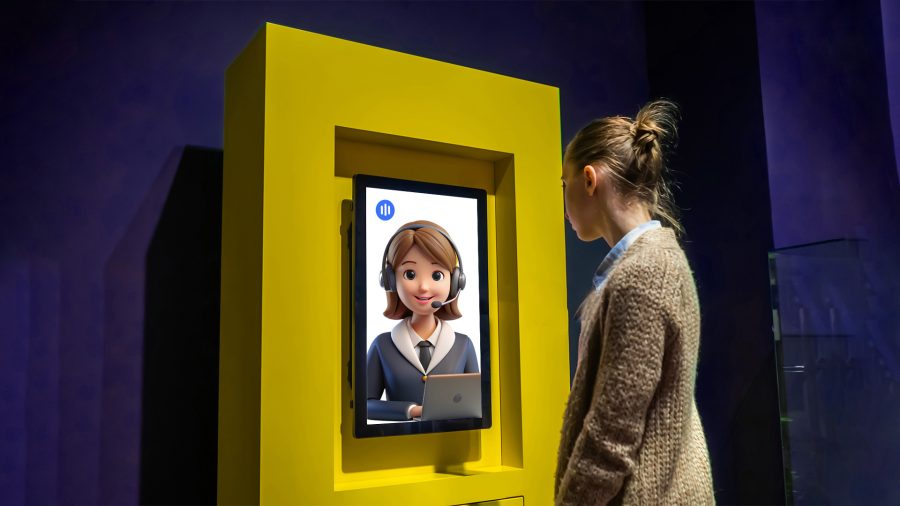
5. API Integrations & Data Syncing
Want your assistant to check orders, suggest products, or pull user data? You’ll need deep integrations with your CMS, CRM, or e-commerce platform. A smart virtual brand assistant isn’t just charming—it’s wired directly into your business logic.
There isn’t a silver bullet solution for this. We can develop what you need.
Key Roles of Virtual Assistants in Brand Strategy
A well-designed Virtual Assistant isn’t just a nice-to-have—it’s a force multiplier for your brand. By blending customer service, content creation, and brand storytelling into one unified digital persona, these characters become strategic assets that do more than just “talk.” They drive value across the entire marketing funnel.
Let’s explore how.
Customer Support With a Personality
Forget robotic auto-replies. Today’s Virtual Assistants deliver customer support that feels conversational, human, and genuinely helpful—without ever going off-brand.
They don’t just say, “How can I help you?”
They say, “Hey! I’ve got your back. Let me walk you through this.”
By combining NLP-powered dialogue with a brand-aligned tone of voice, your assistant can answer FAQs, handle returns, or walk customers through complex purchases—while staying friendly, fast, and consistent.
Available 24/7, multilingual, and immune to burnout, they reduce support costs and boost customer satisfaction. A smart, styled, always-on assistant? That’s loyalty-building gold.
Product Guidance and E-Commerce Navigation
Today’s online shoppers are impatient. They want answers fast. They want confidence in their choices. And they want the experience to feel… well, human. That’s exactly where Virtual Assistants shine.
Instead of making users scroll through endless menus, a Virtual Assistant can jump in and say:
“Looking for something lightweight and under $100? I’ve got just the thing.”
This isn’t just basic filtering. It’s guided, intelligent discovery—with product suggestions tailored to individual needs, preferences, and even moods. Think of it as the digital version of a smart, stylish in-store rep who knows your catalog like the back of their hand.
But better—because this one never takes a break.
Even better? These assistants can be embedded across your e-commerce site, social channels, or even inside AR and mobile apps—creating a seamless, always-on shopping journey that converts more clicks into checkouts.
From sizing tips to color comparisons to “You might also like” nudges, your Virtual Assistant isn’t just a helper—it’s a high-performing digital salesperson.
Always-On Brand Storytelling and Narrative Marketing (Content Creation)
Your brand doesn’t need just another content tool. It needs a voice. A face. A personality that can show up daily to inspire, educate, entertain—and keep the conversation going. That’s where a Virtual Assistant becomes an unstoppable content engine.
Unlike human creators, these assistants don’t rely on moods or coffee. They show up on schedule, in style, and 100% on-message—every single time.
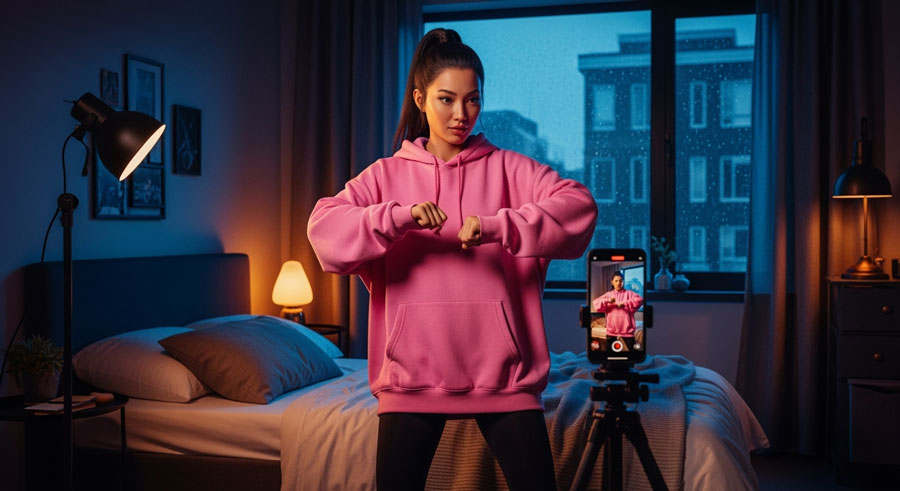
From Instagram Reels to TikToks, from scripted product videos to “behind-the-scenes” teasers, your Virtual Assistant can host content that feels alive and intentional. And since they’re not tied to a single platform, you can scale your storytelling across social, web, mobile, in-app, and even in the metaverse.
And the best part? Their story never stops.
You can design ongoing arcs:
- Origin stories
- Product journeys
- Day-in-the-life episodes
- Campaign narratives that evolve week by week
Think about Lu do Magalu. She’s not just posting product links—she’s telling a long-form story about being curious, helpful, stylish, and tech-savvy. That’s narrative marketing, and your Virtual Assistant can do the same.
They’re not just content creators. They’re content characters—with endless story potential.
Personalized Engagement on Social Media (Virtual Influencer)
Here’s where things get powerful. Virtual Assistants don’t just support and sell—they connect. When positioned as virtual influencers, they become your brand’s most consistent and scalable presence on social media—engaging with followers in ways traditional influencers (and certainly static mascots) just can’t.
Read more about virtual influencers.
They can reply to comments, stitch TikToks, post stories, react to trends, or even host livestreams—all while staying 100% on-brand. No scandals. No off-script tweets. No missed deadlines. Just pure, controlled engagement—wrapped in personality and charm.
Want your assistant to hype a product drop on Instagram, then casually answer FAQs on Threads, and follow it up with a playful TikTok remix? Easy. The same character, the same tone, across every channel—acting as if they’re alive in your audience’s world.
More than just “posting,” these AI-powered influencers interact in real-time:
- Hosting AMA sessions
- Running polls
- DM’ing product suggestions
- Resharing fan-generated content
- Reacting to viral moments within minutes
This isn’t social media management. It’s full-blown social character engagement—driven by data, fueled by AI, and executed with brand-perfect polish.
The result? More visibility. Higher engagement. And a virtual personality your audience feels like they know.
How Virtual Assistants Differ from Traditional Brand Mascots and Influencers
Let’s make one thing clear—Virtual Assistants aren’t mascots in disguise, and they’re not just digital stand-ins for human influencers. They represent an entirely new hybrid: one that blends the control of a brand asset with the personality and presence of a human creator.
Read more about brand mascots.
Yes, they might look like a mascot or act like an influencer—but the real magic lies in what they do, how they scale, and the way they evolve with your audience.
To understand the difference, you have to think beyond looks and platforms. You have to think in terms of function, flexibility, and future-readiness.
Let’s break it down.
One Character, Multiple Functions
This is where Virtual Assistants truly outclass their predecessors. Traditional brand mascots are great for awareness. Human influencers are great for reach. But Virtual Assistants? They do both—and more.
One virtual character can act as your brand’s:
- Customer Support Agent
- Product Educator
- Content Creator
- Social Media Personality
- E-Commerce Guide
- Brand Spokesperson
And it doesn’t just play these roles—it integrates them. Seamlessly. One character. One voice. Multiple functions.
That means the same assistant who’s helping a shopper navigate your website on Tuesday could be announcing a campaign on Instagram Stories on Wednesday—and answering questions in a livestream by Friday. With a consistent look, tone, and message all the way through.
Compare that to human influencers, who can’t be everywhere. Or mascots, who typically rely on external scripts and lack interactivity. Virtual Assistants are engineered to scale. They’re not just present—they’re proactive.
When you centralize these functions into a single, AI-powered personality, the payoff is huge: fewer silos, lower costs, and a more cohesive customer experience.
Your audience doesn’t just recognize your brand voice—they interact with it.
Controlled Branding vs. Influencer Risk
Here’s a hard truth every marketer knows: real influencers are risky and expensive.
When you work with real influencers, you have to hire them for every campaign, and that usually comes with a high price tag. On top of that, many influencers only work through agencies or middlemen. If you’ve ever run even one influencer marketing campaign, you already know how exhausting and time-consuming it can be.
Now enter the Virtual Assistant.
With a Virtual Assistant, you control everything: the visuals, the voice, the timing, the values, the language, the messaging. There are no ad-libs. No controversial tweets. No “Sorry, I can’t post today.” You don’t hope they’ll represent your brand well—they’re programmed to.
And because they’re not tied to a real person, they don’t age, pivot, get cancelled, or change aesthetic halfway through a campaign. They scale globally without personal drama or IP restrictions. Your legal team sleeps better. Your creative team has more freedom.
It’s branding without the backlash. Storytelling without the slip-ups.
Sure, human influencers have their place—especially when authenticity and spontaneity are key. But when consistency matters? When you need full alignment with your brand tone, values, and campaign objectives?
That’s where Virtual Assistants become the obvious, reliable, and future-ready choice.
Scalable, Always Available, and Fully On-Message
One of the biggest advantages of a Virtual Assistant? It never logs off.
While human influencers take vacations (and mascots wait for marketing’s next big campaign), Virtual Assistants are always active. Always creating. Always responding. Always aligned.
They don’t get tired, overwhelmed, or moody. They don’t miss deadlines. And they don’t forget brand guidelines—because they are the guidelines.
Whether it’s helping a customer navigate your website at 3 a.m., launching a social video while your team sleeps, or instantly responding to comments in multiple languages, your Virtual Assistant performs at full capacity—around the clock, around the globe.
And thanks to AI-powered personalization, they’re not just repeating static scripts. They can adjust tone based on audience behavior, tailor content to individual preferences, and evolve with data—all while keeping your message sharp and consistent.
This kind of always-on, perfectly branded presence just isn’t possible with human creators or static characters.
Virtual Assistants let you scale your brand personality—not just your content pipeline.
Because in today’s digital landscape, speed and consistency win.
And your audience expects both.
Real-World Examples of Cohesive Virtual Brand Characters
You’ve seen the theory. Now let’s talk proof.
Virtual Assistants aren’t just experimental concepts—they’re already making measurable impact in real campaigns, across real industries, driving real results. Some of them have become cultural icons. Others are quietly powering billion-dollar businesses from behind the scenes.
What do they all have in common?
Each one is a cohesive, full-spectrum brand character—not a gimmick or a placeholder, but a long-term strategic asset.
Let’s meet some of the best in class.
Lu do Magalu – Brazil’s Retail Powerhouse Avatar
If there’s one virtual brand assistant that proves how powerful this model can be, it’s Lu do Magalu.
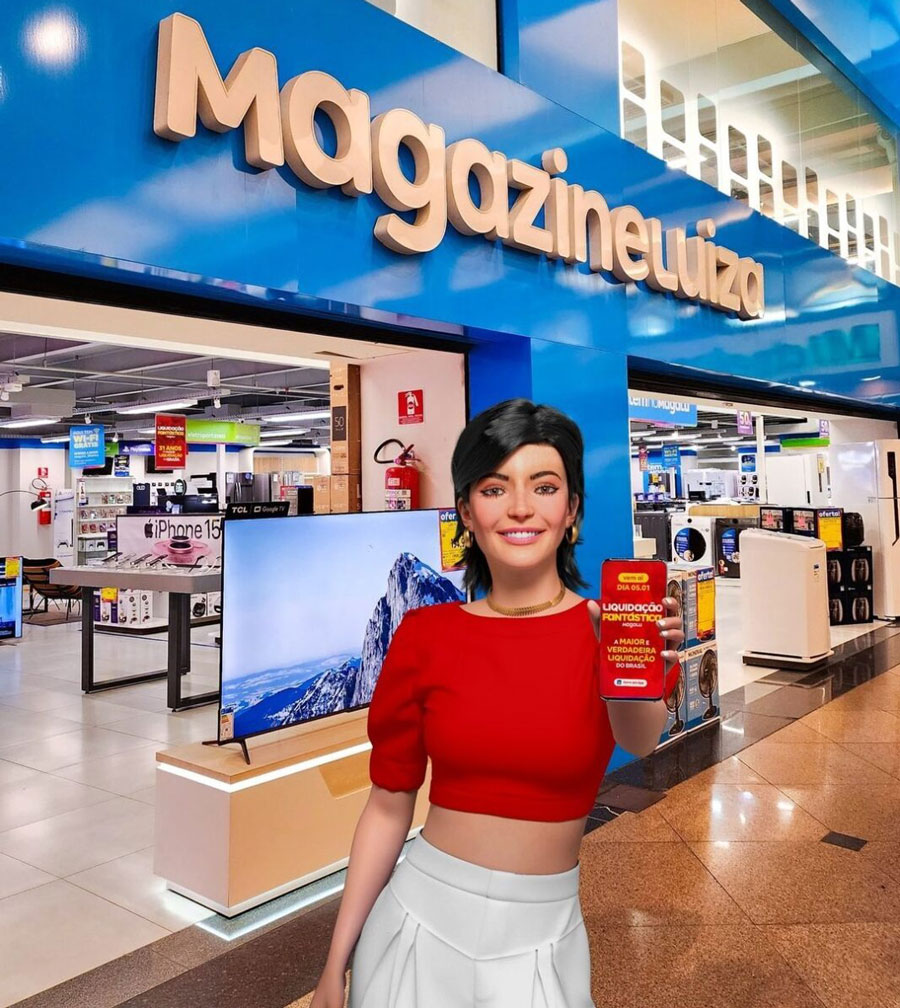
Born as a CGI helper on a tech blog in 2009, Lu evolved into Brazil’s most influential virtual personality—now acting as the ever-present voice and face of retail giant Magazine Luiza. She’s not just a spokesperson. She’s a star.
Lu hosts product tutorials, engages fans on Instagram and TikTok, drops content on YouTube, answers questions on social, and appears in national ad campaigns—all while staying unmistakably on-brand. With over 25 million followers across platforms, she’s not just popular—she’s profitable.
And here’s the kicker: people trust her.
Lu is seen as approachable, helpful, tech-savvy, and genuine—despite being 100% virtual.
Why? Because Magazine Luiza invested in her long-term narrative. She has a personality, a tone, and a purpose. She’s not a model. She’s a digital employee.
The result?
Higher engagement. More consistent messaging. Lower marketing overhead.
Lu doesn’t just talk at customers—she talks with them. And she’s doing it at scale, 24/7, without ever missing a beat.
Why Brands Are Investing in Virtual Assistants
Brands don’t invest in hype—they invest in returns.
So why are more companies across retail, tech, beauty, finance, and entertainment pouring resources into building and deploying Virtual Assistants?
Because they work. They’re cost-efficient, highly scalable, emotionally resonant, and, most importantly—they solve the modern marketing equation: How do we create deeper, more personalized engagement at scale, without compromising brand control?
Virtual Assistants don’t just check that box. They rewrite it.
Let’s explore the real reasons brands are making the shift—from traditional talent and static assets to fully integrated, AI-powered digital personalities.
Cost-Efficient Scaling of Engagement
One of the most compelling reasons brands are leaning into Virtual Assistants? They scale—beautifully and affordably.
Hiring a top-tier influencer or maintaining a celebrity ambassador program is expensive. There’s appearance fees, negotiation, content scheduling, legal overhead, and all the unpredictable variables that come with working with, well… humans.
Now imagine this:
- A Virtual Assistant who produces unlimited content, in multiple languages
- Never demands a raise, takes a sick day, or needs a production crew
- Can engage thousands—millions—simultaneously, across time zones
- And does it all 100% on-message, every single time
Once created, a Virtual Assistant becomes a repeatable content and engagement asset—one that generates ROI across campaign after campaign. Whether it’s embedded on your website, starring in a launch video, interacting on TikTok, or leading a webinar, the incremental cost is a fraction of traditional influencer fees.
And here’s the kicker: the more you use them, the lower the cost per impression, per conversation, per conversion.
For brands looking to do more with less—more content, more interactivity, more consistency—Virtual Assistants are proving themselves as long-term, high-efficiency investments.
Not a trend. A new marketing infrastructure.
Creative Control and Brand Safety
Every marketer knows the feeling: a high-profile influencer veers off-message. A campaign loses cohesion. A branded post backfires. Suddenly, you’re in crisis mode—spinning damage control instead of celebrating ROI.
That’s why brands are embracing Virtual Assistants: complete creative control with zero personality risk.
Unlike real-world creators, Virtual Assistants never misrepresent your values. They don’t improvise controversial opinions or post off-brand selfies. Every word, every gesture, every frame is intentional—crafted to fit your voice, tone, and message with absolute precision.
This level of control is a game-changer. You can:
- Fine-tune language and tone for different markets
- Preview and approve every asset before launch
- A/B test campaigns without overhauling a talent contract
- Guarantee consistent visual identity, everywhere
And most importantly?
You reduce reputational risk. In a world where public perception can shift overnight, a Virtual Assistant gives you a stable, brand-safe presence across platforms.
It’s not about micromanaging. It’s about protecting your brand’s integrity—without sacrificing reach, engagement, or creativity.
Consumer Trust, Novelty, and Future-Proof Identity
It might sound counterintuitive—but virtual characters, when designed thoughtfully, can actually build real trust.
Why? Because today’s consumers—especially Gen Z and Gen Alpha—don’t just want authenticity. They want consistency, relatability, and a sense of novelty. Virtual Assistants deliver all three, in ways that real influencers can’t always guarantee.
They’re fresh. They’re futuristic. They’re frictionless.
And when they’re given a distinct voice, personality, and storyline, they become more than just content machines—they become relational anchors. Characters your audience recognizes, anticipates, and interacts with regularly.
Think of Lu do Magalu, or Samsung’s Sam. These characters aren’t “fooling” anyone into thinking they’re real. That’s not the point. The point is that they’re reliable, entertaining, and emotionally consistent. And in a digital world flooded with noise, that level of stability becomes magnetic.
Bonus: Virtual Assistants position your brand as a tech-forward innovator. They tell your audience, “We don’t follow trends—we build them.” That’s a trust multiplier, especially for brands competing in saturated or fast-evolving markets.
In short?
Virtual Assistants don’t just generate engagement. They generate belief—that your brand is ready for what’s next.
How to Create a Cohesive Virtual Brand Character
Creating a Virtual Assistant isn’t just about slapping together a pretty 3D model and calling it a day. It’s about building a character—one that speaks, acts, and evolves like a real team member. A cohesive virtual brand assistant is crafted with intention, designed to connect, and engineered to deliver results across platforms and campaigns.
This is part design, part strategy, part storytelling—and yes, part tech stack.
So where do you start?
There are three main paths brands can take, depending on resources, timelines, and long-term vision.
From Scratch and In-House
Building a virtual brand assistant entirely in-house gives you one major advantage: total creative control from day one. But it also means you’ll need the right mix of talent, tech, and time.
This route is ideal for companies with in-house animation, AI, or content teams—or those looking to turn their assistant into a flagship, IP-level asset. Think Pixar meets product marketing.
Here’s what’s typically involved:
- Concept + Personality Design
Define your assistant’s role, tone, values, and brand alignment. Are they playful or professional? Formal or relatable? What’s their backstory? - 3D Modeling + Rigging
Use tools like Blender, Maya, or Unreal Engine to bring the character to life visually—complete with facial expressions, gestures, and movement systems. - Voice & Interaction Layer
Integrate voice synthesis, AI dialogue engines (like ChatGPT or custom NLP models), and real-time rendering if needed. - Content Pipeline
Build internal workflows for generating videos, livestreams, posts, or interactive responses—using your character as the central engine. - Testing + Feedback Loop
Soft-launch internally or with test audiences. Refine tone, movement, and performance based on real feedback before full deployment.
Potential Disadvantages of the In-House Route
While the full control is appealing, building a virtual assistant internally isn’t for every brand. Here’s why:
- High Upfront Costs
Hiring 3D artists, designers, scenarists, and AI engineers can quickly add up, especially if you’re starting from scratch. - Longer Timelines
Developing a high-quality assistant takes months. If you’re aiming to capitalize on a campaign, trend, or seasonal window, you may miss the moment. - Steep Learning Curve
Virtual assistants aren’t just avatars—they’re hybrid systems involving narrative design, brand voice, AI integration, and multi-platform deployment. If your team lacks experience, expect growing pains (and delays). - Scalability Bottlenecks
Without robust internal systems, your assistant may struggle to scale. Releasing content consistently across platforms can become a drain on internal bandwidth if not well-planned. - Risk of Misalignment
If marketing, design, and tech teams aren’t tightly synced, the character may feel fragmented or disconnected from your brand’s real voice.
With the Help of Experienced Agencies
If your team lacks the time or expertise to build a virtual assistant in-house, working with a specialized agency is the fastest and most effective route.
Top-tier agencies offer end-to-end support: character design, voice, animation, AI integration, and cross-platform deployment—all with a strategic lens. You define the goals and tone; they handle execution at scale.
This approach is ideal for brands that want professional results without the steep learning curve or long timelines of DIY development.
Just be sure you partner with an agency that understands branding—not just animation.
Work With Dream Farm Agency
At Dream Farm Agency, we create virtual brand assistants that do more than look good—they perform.
From high-end 3D modeling to interactive personalities powered by AI, we help brands launch characters that engage, sell, and scale across channels. Whether you need a social-ready digital spokesperson or a full-service virtual assistant, we handle it—from concept to activation.
Want results, not just assets?
Get in touch with us to explore what we can build together.
Using Platforms and Related Services
For brands looking to test the waters or move quickly without a large budget, using AI-powered platforms or ready-made avatar services can be a practical starting point.
Tools like character generators, avatar builders, or AI video creation platforms let you produce basic content using digital personalities—often with minimal setup. Some offer pre-designed virtual influencers you can license or customize.
It’s fast, scalable, and affordable.
But here’s the tradeoff:
- Limited personality depth
- Generic designs
- Little control over design and long-term brand alignment
- Low storytelling potential without custom development
These platforms are best suited for temporary campaigns, MVP experiments, or social media testing. If you want a long-term, emotionally resonant brand character, you’ll likely outgrow them fast.
Still, for brands new to virtual assistants, they offer a great way to explore possibilities—before committing to a more customized approach.
Final Thoughts: Is Your Brand Ready for a Virtual Assistant?
Let’s bring it all together.
Virtual Assistants are no longer a futuristic concept—they’re a practical, proven solution for brands that want to engage smarter, create faster, and connect deeper.
But before you jump in, here’s a quick checklist. A brand that’s ready to launch a successful Virtual Assistant usually has:
1. A Clear Need for Scalable Engagement
Are your teams stretched thin trying to respond to DMs, manage comments, or produce content? A Virtual Assistant can multiply your brand’s presence without multiplying your workload.
2. A Desire for Brand Consistency Across Channels
Are you posting across platforms, but struggling to maintain a unified voice and style? A virtual brand character becomes your most consistent communicator—on-message, every time.
3. A Forward-Looking Mindset
Are you committed to innovation and long-term brand equity—not just short-term performance? Virtual Assistants position your brand as tech-savvy, design-driven, and future-ready.
If you nodded “yes” to any of these—then yes, your brand is ready.
Once your brand is ready for an assistant, the next step is to think even bigger. To learn how to evolve your assistant from a helpful tool into a powerful personality that drives campaigns, explore the complete guide to virtual influencer marketing.
And if you’re looking for the right team to build it?
Dream Farm Agency is here to help.
We design, animate, and deploy high-performance Virtual Assistants that blend creativity, AI, and strategy. Whether you need a social-first digital persona or an always-on brand guide, we’ll bring your vision to life—with cohesion, clarity, and impact.
Don’t just keep up with the future.
Create it. With us.
Let’s talk.

HosseinDigital Marketing Expert
